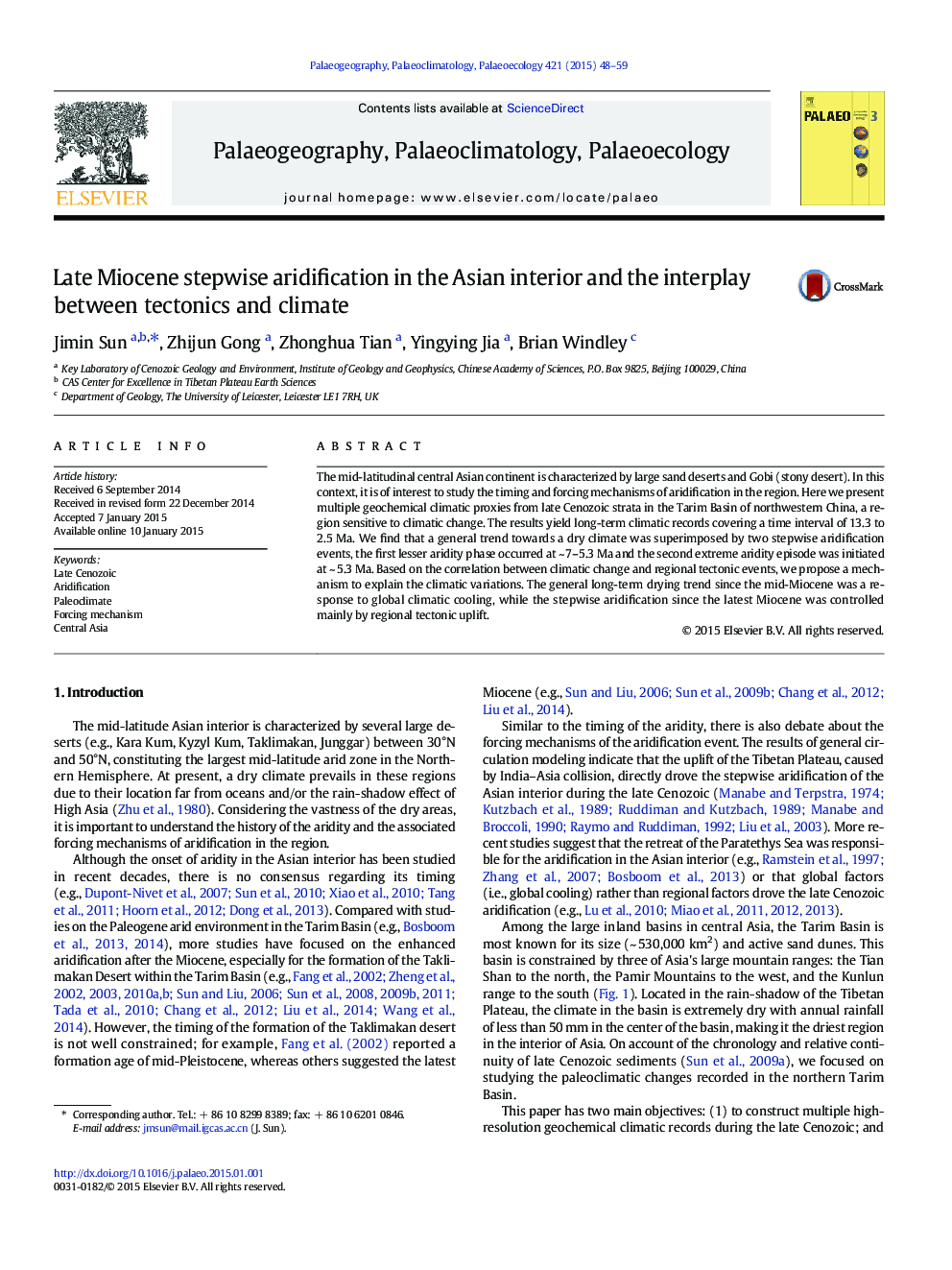| Article ID | Journal | Published Year | Pages | File Type |
|---|---|---|---|---|
| 4466030 | Palaeogeography, Palaeoclimatology, Palaeoecology | 2015 | 12 Pages |
•Constructing paleoclimatic records from 13.3 to 2.5 Ma in the Asian interior•A general long-term drying trend since the mid-Miocene•Enhanced stepwise aridification initiated at ~ 7–5.3 Ma and ~ 5.3 Ma
The mid-latitudinal central Asian continent is characterized by large sand deserts and Gobi (stony desert). In this context, it is of interest to study the timing and forcing mechanisms of aridification in the region. Here we present multiple geochemical climatic proxies from late Cenozoic strata in the Tarim Basin of northwestern China, a region sensitive to climatic change. The results yield long-term climatic records covering a time interval of 13.3 to 2.5 Ma. We find that a general trend towards a dry climate was superimposed by two stepwise aridification events, the first lesser aridity phase occurred at ~ 7–5.3 Ma and the second extreme aridity episode was initiated at ~ 5.3 Ma. Based on the correlation between climatic change and regional tectonic events, we propose a mechanism to explain the climatic variations. The general long-term drying trend since the mid-Miocene was a response to global climatic cooling, while the stepwise aridification since the latest Miocene was controlled mainly by regional tectonic uplift.
